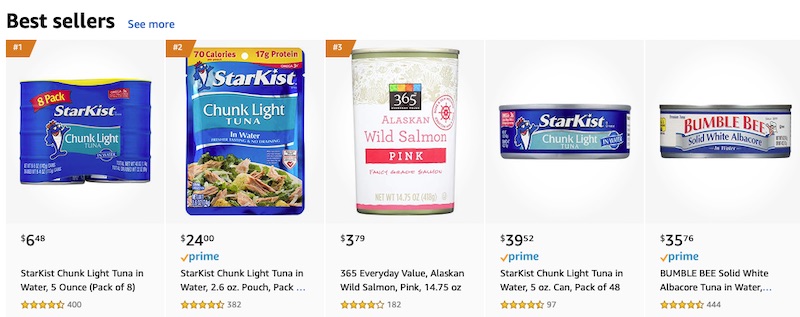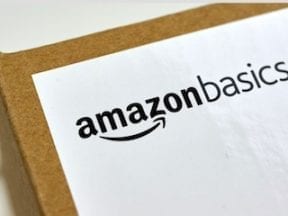
Amazon offers many grocery items on its marketplace. The selling requirements are stringent but worth it for many food brands. Source: Amazon.
Grocery is among the fastest-growing ecommerce categories. eMarketer estimated last summer that online U.S. food-and-beverage retail sales would grow by 18 percent in 2019, to roughly $20 billion. That’s just 2.7 percent of the total, according to Coresight Research, but the percentage will undoubtedly increase.
Amazon, Target, and Walmart are competing for a dominant U.S. online grocery presence. Food-and-beverage manufacturers and resellers have options, in other words, as to which platform works best for their company.
As a longtime marketplace seller and consultant, I’m more familiar with Amazon, which sells grocery items via three channels: Prime Pantry, AmazonFresh, and its third-party marketplace. I’ll address each channel in this post.
Prime Pantry, AmazonFresh
Prime Pantry and AmazonFresh are for Prime members only. Prime Pantry focuses on non-perishable goods or products with longer shelf lives, while AmazonFresh is for perishable items, including produce.
AmazonFresh customers pay only for the goods; there’s no additional fee to participate beyond the Prime membership. Prime Pantry customers, however, pay $4.99 per month plus the Prime fee plus the cost of the goods. AmazonFresh is available only in large metropolitan areas.
Amazon chooses suppliers for both programs from existing first-party sellers. Grocery brands cannot separately apply — it’s invitation-only.
Marketplace
Food and beverage brands can sell their products on Amazon’s marketplace without being a supplier to Prime Pantry or AmazonFresh. This allows brands to reach all shoppers, Prime members or not.
Amazon imposes unique restrictions on marketplace food suppliers, however, especially for perishable items. The items must otherwise meet state and federal (U.S.) health requirements. This includes proper packaging, sealing, and labeling — with expiration dates.
Fulfillment by Amazon has additional restrictions, such as an independent, third-party validation that perishable products stay below the maximum chill level while in transit to an FBA center and throughout delivery.
Using a Fulfillment by Merchant model can help avoid the additional verifications. A third-party cold storage facility makes it possible for FBM sellers to meet Amazon’s requirements for selling perishable groceries, such as maintaining product temperatures in worst-case scenarios. Cold storage facilities must be licensed by the states in which they operate and meet the standards set by the various state departments of health.
Nationwide cold-storage facility networks — The World Group, for example — allow sellers to reach consumers in the continental United States in 24 hours or less. In my experience, these networks are very helpful and take the hassle out of food distribution, similar to FBA.
Consistently hitting fulfillment targets can make sellers eligible for Seller Fulfilled Prime, wherein all of a seller’s products carry the Prime badge, like FBA-fulfilled items.
Getting Started
Many grocery brands still rely on shelf space at physical stores. Via Amazon, brands can get their products in front of more potential customers. I’ve seen plenty of food companies — plant-based meats, seafood, beef steaks — experience much success on Amazon’s marketplace. Getting started can be painful, but it’s often worth it.




